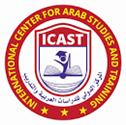Building Stability in the Middle East: An Analysis of Political Integration through the GCC and the Arab League
Abstract
This study aims to examine the impact of regional integration policies on interstate relations and political stability in the Middle East. The main focus of the research includes analyzing the influence of these policies on diplomatic cooperation, political stability, and regional security. Additionally, the study will identify the challenges and obstacles hindering the effectiveness of regional integration and propose strategies to enhance integration with a more inclusive and cooperative approach. To elaborate on the discussion, the author uses regionalism theory. The method used is descriptive-analytical. The study concludes that regional integration in the Middle East faces significant challenges, such as dependence on hydrocarbon exports, which limits the development of industry and the private sector in GCC countries. Economic disparities between wealthy countries like Saudi Arabia and Qatar and poorer countries like Yemen are exacerbated by the migration of young professional workers to the GCC. In addition to economic issues, the region also faces insecurity in food, water, and energy. Internal conflicts, cultural identity differences, and political rivalries often hinder the effectiveness of regional cooperation. To achieve better integration, an approach that involves intergovernmental dialogue, inclusive strategies, and the active participation of civil society and the private sector is required.
References
Abdussamad, Z. (2021). Metode Penelitian Kualitatif. Syakir Media Press.
Abraham, R. (2015). Confronting the Challenge of Political Reforms in GCC States: Domestic Transition via Regional Integration (Research Paper). http://www.mondialisations.org/medias/pdf/confronting_thechallenge_of_political_reformsingccstates.pdf
Anderson, L. (2011). The State and Social Transformation in Tunisia and Libya, 1830-1980. Princeton University Press.
Carpenter, J. W. (2025). The Biggest Oil Producers in the Middle East. Investopedia. https://www.investopedia.com/articles/investing/101515/biggest-oil-producers-middle-east.asp
Dawisha, A. (2012). Arab Nationalism in the Twentieth Century: From Triumph to Despair. Princeton University Press.
Del Sarto, R. A., & Soler i Lecha, E. (2024). Regionalism and Alliances in the Middle East, 2011-2021: From a “Flash in the Pan” of Regional Cooperation to Liquid Alliances. Geopolitics, 29(4), 1447–1473. https://doi.org/10.1080/14650045.2023.2268542
Deutsch, K. W. (2010). Political Community and the North Atlantic Area. Lynne Rienner Publishers.
Ebaidalla, E. M., & Ali, M. E. M. (2023). Assessing the Intra-Arab Trade Integration and Potential: Evidence from Stochastic Frontier Gravity Model. The International Trade Journal, 37(2), 221–239. https://ideas.repec.org/p/erg/wpaper/1247.html
Esposito, J. L. (1998). Islam and Politics. Syracuse University Press.
Falahi, Z. (2012). Prospek Regionalisme Timur-Tengah Pasca-Arab Spring: Telaah terhadap Identitas Kolektif Liga Arab. Jurnal Kajian Wilayah, 3(2), 189–205.
Febriyanti, A. (2022). Pengaruh Identitas Politik Terhadap Regionalisme Timur Tengah: Integrasi atau Disintegrasi? Jurnal Transformasi Global, 9(2), 126–136.
Ferabolli, S. (2015). Arab Regionalism: A Post-Structural Perspective. Routledge.
Gasper, M. E. (2012). Conclusion: There is a Middle East. In M. E. Bonine (Ed.), There a Middle East: The Evolution of a Geopolitical Concept (pp. 231–243). Stanford University Press.
Gerges, F. A. (2013). The New Middle East: Protest and Revolution in the Arab World. Cambridge University Press.
Greaves, S. (2012). A Primer of Middle Eastern Leadership Culture. Journal of Strategic Security, 5(4), 99–118. https://doi.org/10.5038/1944-0472.5.4.7
Grow, J. (2019, May 15). Economic (In)security and Economic Integration in the Middle East . E-International Relations. https://www.e-ir.info/2019/05/15/economic-insecurity-and-economic-integration-in-the-middle-east/
Holes, C. (2004). Modern Arabic: Structures, Functions, and Varieties. Georgetown University Press.
Ilievski, N. Lj. (2015). The Concept of Political Integration: The Perspectives of Neofunctionalist Theory. Journal of Liberty and International Affairs, 1(1), 1–14. https://e-jlia.com/index.php/jlia/article/view/13
Koesrianti, K. (2013). International Cooperation Among States in Globalized Era: The Decline of State Sovereignty. Indonesia Law Review, 3(3), 267–284. https://doi.org/10.15742/ilrev.v3n3.41
Laursen, F. (2008). Theory and Practice of Regional Integration. Florida European Union Center.
Legrenzi, M., & Calculli, M. (2013). Regionalism and Regionalization in the Middle East: Options and Challenges. The International Peace Institute (IPI), 1–10. https://www.ipinst.org/2013/03/regionalism-and-regionalization-in-the-middle-east-options-and-challenges
Leonard, M. (2023). The Post-American Middle East. European Council on Foreign Relations. https://ecfr.eu/article/the-post-american-middle-east/
Lindberg, L. N., & Scheingold, S. A. (1970). Europe’s Would-Be Polity: Patterns of Change in the European Community. Prentice-Hall, Inc.
Moehnilabib, M. (1997). Dasar-Dasar Metodologi Penelitian. Lembaga Penelitian IKIP Malang.
Mohamedou, M.-M. O. (2016). Arab Agency and The UN Project: The League of Arab States between Universality and Regionalism. Third World Quarterly, 37(7), 1219–1233. https://doi.org/10.1080/01436597.2016.1154437
Rashed, D. (2019). Geography, Resources and the Geopolitics of Middle East Conflicts. E-International Relations. https://www.e-ir.info/2019/05/24/geography-resources-and-the-geopolitics-of-middle-east-conflicts/
Sever, A. (2018). Globalism, Regionalism and the Middle East. E-International Relations. https://www.e-ir.info/2018/10/12/globalism-regionalism-and-the-middle-east/
Sheikh, F. (2017). Who Speaks for the Islamic World? Religion, Identity and the Organisation of Islamic Cooperation. Politics, Religion & Ideology, 18(1), 117–121. https://doi.org/10.1080/21567689.2017.1298296
Wardoyo, B. (2017). Dinamika Geopolitik Timur Tengah dan Pengaruhnya terhadap Indonesia. Jurnal Kajian Lemhannas RI, 5(1), 43–56. https://jurnal.lemhannas.go.id/index.php/jkl/article/view/133
Copyright (c) 2025 Middle Eastern Culture & Religion Issues

This work is licensed under a Creative Commons Attribution-NonCommercial-ShareAlike 4.0 International License.
Middle Eastern Culture and Religion Issues (MECRI) applies the Creative Commons Attribution-NonCommercial-ShareAlike 4.0 International License, with the copyright on the published articles held by the journal. Authors are required to transmit the copyright to this journal once the articles are accepted. This journal is granted a non-exclusive license to publish the articles as the original publisher, along with the commercial right to publish printed issues for sale. Since this journal applies an open-access mode, authors may post articles published by this journal on personal websites or institutional repositories both prior to and after publication while providing bibliographic details that credit this journal.
By publishing with this journal, the copyright holder grants any third party the lawful right to use their published article to the extent provided by the Creative Commons Attribution-NonCommercial-ShareAlike 4.0 International license.
Subsequently, people are lawfully permitted to share, distribute, remix, adapt, and build upon the published articles for noncommercial purposes only, by providing appropriate credit or attribution (Title, Author, Source, and License of the work), including a link to the license, indicating if any changes were made, and redistribute the derivative outputs under the same license (CC BY-NC-SA 4.0).

















